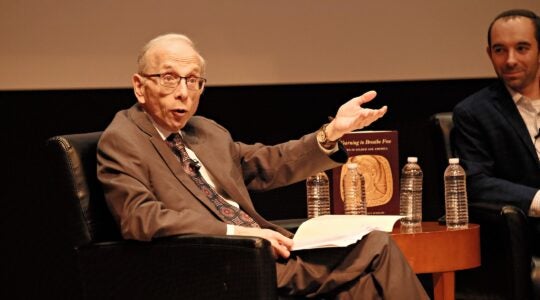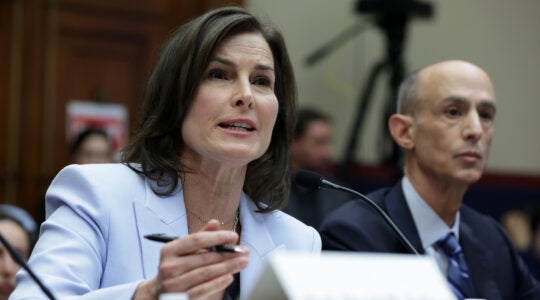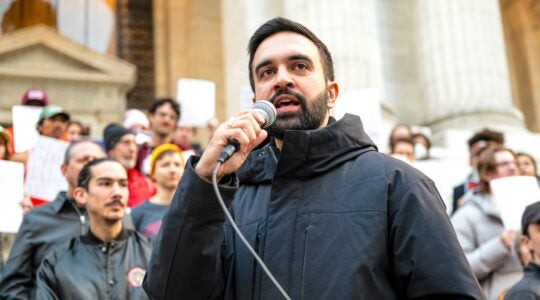The Forward has an excellent special section on what has happened in the year since we found out that Bernard Madoff was bilking his clients for billions of dollars.
The Forward’s basic take: In the days and months immediately following Madoff’s admission to his sons that he was a sham, the general sentiment was that his thievery would change the nonprofit landscape forever; but as it turns out, a sea change has not occurred.
Many thought the fact that Madoff was able to use a familiarity scam to weasel scores of foundations and nonprofit boards into investing with him would cause that nonprofit world to revamp its governance practices to make it impossible for another scam.
What did Josh Nathan-Kazis find? Some nonprofits have, some are thinking about it, and some won’t.
in the year since Madoff’s December 11, 2008, arrest for masterminding a $65 billion Ponzi scheme, it’s not clear how many lessons have been learned. Charendoff says that while there was a sense immediately after the scandal broke that investment policies among Jewish foundations required re-examination, he has not yet seen major changes as a result.
In the broader not-for-profit world, some individual institutions have publicly discussed measures to reform their procedures, including the Jewish Community Foundation of Los Angeles, where Madoff investments were valued at $18 million, and Yeshiva University, which had indirect investments with Madoff valued at $110 million. The North Shore-Long Island Jewish Health System, which had $5.7 million worth of investments with Madoff, has also discussed the measures it has taken to address flaws in its investment practices.
As if to illustrate Charendoff’s point, however, some
foundations that suffered Madoff losses told the Forward that they saw no need to examine and change their investment practices.
Many believed the Madoff scandal would sink Hadassah. The women’s Zionist organization was among the swindler’s most high-profile clients in the charity world and took one of the largest immediate paper losses of any nonprofit, fueling the view that layoffs would result from the debacle. And to top it off, the woman who helped get the organization in bed with Madoff wrote a tell-all book about how she was sleeping with Madoff.
Talk about a bad environment for fund raising.
Well, according to Gal Beckerman’s reporting, it turns out that Hadassah could be turning the corner. The organization’s fund raising has returned to pre-Madoff levels (assuming you set aside the one-time $75 million gift from Bill Davidson in 2007). Its layoffs had been planned for years as part of a restructuring process designed by the consulting firm McKinsey & Co.
And, shhh … Hadassah actually may have made money in the end off its Madoff investments.
The story is built around Hadassah’s national president, Nancy Falchuk, and her continuing efforts to push through a ton of reforms.
A persistent stereotype attaches itself to Hadassah: sweet, elderly ladies holding tea socials and collecting money in tin boxes for Israel.
But it takes no more than five minutes with Nancy Falchuk, the organization’s national president, to dispel this image. Her Hadassah sounds like it has been processed through the meat grinder of business consultants. The organization’s many chapters — some in nursing homes scattered across the country — are “units.” Falchuk wants to institute “central banking” and “service centers.” And her main concern, by far, is a deep “restructuring,” one that would alter, in important ways, how the 98-year-old Zionist women’s organization functions.
It was individual Madoff investors generally who suffered the biggest hurt — a point hammered home in Beth Schwartzapfel’s story about the anger that many of them feel toward the U.S. government, which they feel did not and still is not protecting them.
The true Madoff effect will be a slow developing picture. But the Forward’s Polaroid of how things look a year later gives us a nice glimpse of what we will probably see in the end.
While some nonprofits, such as the UJA-Federation of New York, already had policies in place to guard against familiarity scams, others are now wising up. Others will not. It’s the way of the nonprofit world.
Madoff may have provided the final nudge to nonprofits already weak and teetering on the edge, but organizations such as Hadassah — those with relatively solid foundations and viable plans for the future — can withstand even a significant Madoff hit. And they will.
Eventually it could turn out that the biggest blow to nonprofits will come not from their involvement with Madoff but that of their donors — the individuals who lost significant portions of their wealth investing with Madoff and either cannot or will not continue their philanthropic support.
After the end of 2009, nonprofits will have a better sense of who stopped giving or decreased their donations. But they may never know whether those donors disappeared because of Madoff or that other, colder thief that arrived at about the same time and few escaped — the financial crisis and recession.
JTA has documented Jewish history in real-time for over a century. Keep our journalism strong by joining us in supporting independent, award-winning reporting.





